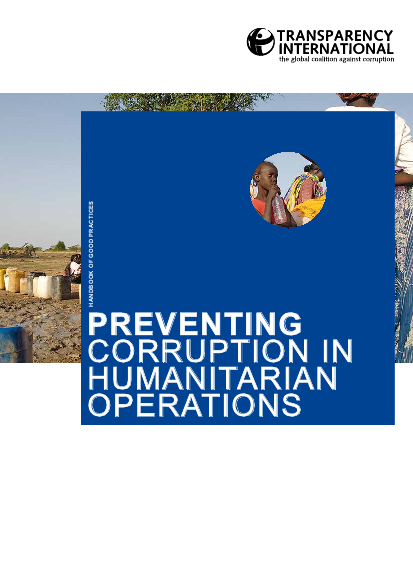Handbook of Good Practices

Corruption undermines the humanitarian mission that is the raison d’être of humanitarian operations. Transparency International (TI) seeks to develop coalitions and engage civil society organisations, public institutions, private sector representatives and the public in addressing corruption and promoting transparency, accountability and integrity. For this purpose, the first edition of the TI Handbook was published in 2010. The substantial increase in the last few years of different challenges in and new ways of delivering humanitarian aid, has resulted in this updated 2014 electronic version of the Handbook.
The update sought to maintain the original goal and purpose for the Handbook, seeking all opportunities to contribute to current project’s training and advocacy goals: (i) increase utilisation of tools; and (ii) raise awareness of corruption risks. Since demand for the updated Handbook and practical guidance will increase with the delivery of trainings, the focus was to: (i) update the reference materials, (ii) improve and expand tools, and (iii) prepare new tools. Hence, the updated version includes a revised list of references and links, as well as relevant new tools, that look at: Communication with Disaster-affected Communities; Reputation Management; Remote Management; Cash as an Alternative; Construction and Reconstruction; and Information and Communication Technology.
The Handbook is designed to help anyone working in the humanitarian sector identify and prevent the corruption risks faced by their particular organisation or department, or within a specific programme or role. It is primarily aimed at managers and staff of humanitarian agencies, both at headquarters (HQ) and in the field.
The Handbook has three sections. The first covers general policies and procedures that will create an organisational context that promotes transparency, integrity and accountability, and is strongly resistant to corruption. The next section addresses specific corruption risks faced by practitioners of the various support functions that underpin every humanitarian programme, such as supply chain management and finance. The final section looks at the risks of corruption most likely to be faced at the different stages of programme implementation, from needs assessment through to post-distribution M&E.